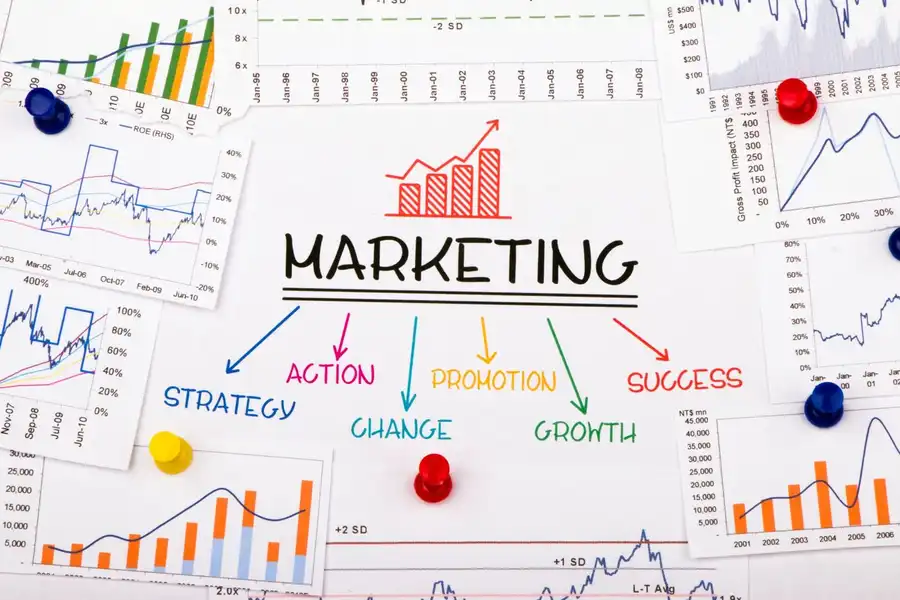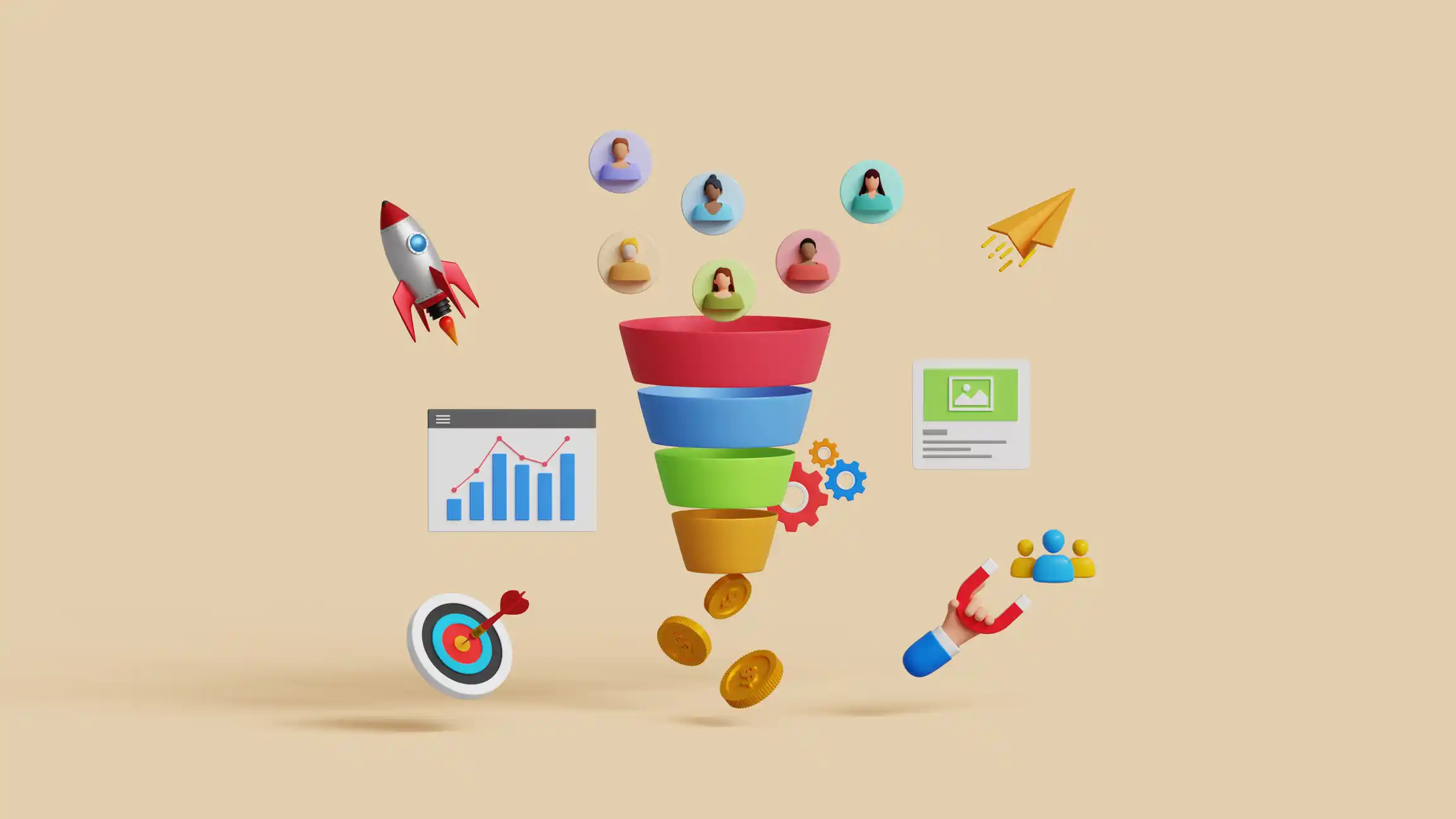What is lead generation?
Lead generation is the process of identifying and attracting potential customers (leads) who have shown some level of interest in a company’s products or services. The main objective of lead generation is to initiate and cultivate relationships with individuals or businesses that are likely to become paying customers in the future.
In the context of marketing and sales, lead generation marketing involves various strategies and tactics aimed at capturing the attention of potential leads and encouraging them to provide their contact information or express interest in learning more about what a company offers.
These strategies often focus on engaging and nurturing leads through different stages of the buyer’s journey, from awareness to consideration and eventually to making a purchase decision.
Lead generation can encompass both online and offline methods, and it can involve a range of traditional marketing channels and digital marketing, so the essential questions are as follows:
What is lead generation in digital marketing?
Lead generation in the context of digital marketing entails a variety of methods to create a list of prospective clients who can be cultivated through focused marketing initiatives until they are prepared to make a purchase.
With the extensive number of tools and strategies that digital marketing offers for generating leads, businesses can connect with potential clients online, where they spend the majority of their time.
The objective is to draw in and hold the attention of prospective leads through relevant interactions and content, eventually guiding them through the sales funnel and turning them into devoted clients.
How does lead generation work?
Lead generation works through a series of strategic steps to identify and attract potential customers (leads) who have shown interest in a company’s products or services. The process involves:
- Capturing their attention.
- Engaging them with relevant content or offers.
- Ultimately converting them into contacts that can be further nurtured through marketing efforts.
Here are the stages of lead generation:
- Identify Target Audience
- Create Valuable Content
- Promote Content
- Landing Pages and Forms
- Call-to-Action (CTA)
- Capture Lead Information
- Segment Leads
- Lead Nurturing
- Qualify Leads
- Pass Leads to the Sales Team
- Measure and Optimize
- Conversion
- Feedback Loop
Standard methods and strategies used in lead generation:
- Content Marketing: It is the process of creating valuable content, including blog posts, ebooks, whitepapers, and videos, that speak to the needs and interests of your target audience. This material draws potential customers and establishes your business as a leader in the field.
- Social Media Marketing: Social media marketing is mainly done through interacting with your target audience on websites such as Facebook, Twitter, LinkedIn, and Instagram. Conversation, specialized advertising, and content sharing can help generate leads.
- Search Engine Optimization (SEO): SEO service involves optimizing the content and structure of your website in order to rank better in search engine results for relevant keywords. This boosts the exposure of your website and drives organic traffic, which can be converted into leads.
- Pay-Per-Click (PPC) Advertising: Running paid ads on platforms such as Google Ads or social media platforms. When consumers search for specific keywords or demographics, these advertisements show. You only pay when someone clicks on your ad.
- Email Marketing: Building and nurturing a list of email subscribers. Sending out targeted and valuable content via email can help keep your brand in front of potential leads and guide them through the buyer’s journey.
- Webinars and Events: Hosting online webinars or in-person events where you provide valuable information to your target audience. These events can help generate leads by capturing attendee information.
- Landing Pages and Forms: Creating dedicated landing pages with forms that offer valuable resources in exchange for contact information. This allows you to collect leads and start nurturing them.
- Lead Magnets: Offering incentives such as ebooks, templates, or free trials in exchange for contact information. This can entice potential leads to share their details.
- Referral Programs: Encouraging your current customers to refer others to your products or services in exchange for rewards or discounts.
- Chatbots and Live Chat: Implementing chatbots on your website to engage with visitors in real time. They can answer questions, provide assistance, and capture lead information.
- Influencer Marketing: Collaboration with influencers or industry experts who could promote your products or services to their followers, thereby generating leads from their audience.
- Retargeting: Displaying advertisements to visitors who have already visited your website or interacted with your content. This can assist in re-engaging potential prospects who did not convert the first time.
But what are the next steps once the lead is generated?
In order to successfully nurture and convert leads into customers, it is first necessary to reply effectively and manage them. Effective lead response management is essential for potential leads to become customers and to increase the return on investment (ROI) of your marketing activities.
For effective lead response management, consider the following recommended practices:
- Respond Promptly: Speed is critical in lead response management. Research shows that leads are more likely to convert when they receive a quick response. Aim to respond within minutes or hours, not days.
- Use Automation: Utilize automation tools to send immediate responses when a lead submits a form or inquiry. Automated responses should be personalized and acknowledge the lead’s specific interaction.
- Prioritize Leads: Not all leads are equal. Prioritize leads based on their engagement level, fit with your target audience and the information they provide. Focus your immediate attention on high-potential leads.
- Personalize Responses: Craft personalized responses addressing the lead’s inquiry or interaction. Avoid generic or canned responses that can come across as impersonal.
- Provide Value: When responding, offer value to the lead. Address their pain points, questions, or concerns, and provide relevant information or resources that align with their needs.
- Multi-Channel Approach: Reach out through multiple communication channels, such as email, phone, and even social media, if appropriate. Different leads might have preferred ways of communication.
- Clear Call-to-Action (CTA): Include a clear next step in your response. Whether scheduling a call, downloading a resource, or visiting a specific webpage, guide the lead toward the next engagement phase.
- Ask Qualification Questions: Follow up with questions that help you better understand the lead’s needs, timeline, and budget. This information can guide your subsequent interactions.
- Active Listening: Pay close attention to the lead’s responses and adjust your communication accordingly. Address their concerns and provide relevant information based on their feedback.
- Balanced Persistence: Follow up persistently without being overly aggressive. Vary your approach—mix emails, calls, and follow-up messages to maintain engagement.
- Provide Consistent Information: Ensure your sales and marketing teams provide consistent information. Conflicting information can confuse leads and harm your credibility.
- Track and Analyze: Use tools to track lead interactions and responses. Analyze data to identify patterns, optimize response strategies, and improve overall performance.
- Lead Nurturing: Develop a lead nurturing strategy that involves sending relevant and valuable content over time. Gradually, the guide leads through the buying journey.
- Sales and Marketing Alignment: Foster collaboration between your sales and marketing teams. Clearly define what constitutes a “qualified lead” and establish a transparent handoff process between the two groups.
- Feedback Loop: Gather feedback from your sales team about lead quality and the effectiveness of responses. This loop ensures ongoing improvement.
- Training and Coaching: Train your team in effective communication, active listening, and customer-centric responses. Provide ongoing coaching to enhance their skills.
By implementing these best practices, you can ensure that your interactions with potential leads are productive, engaging, and conducive to successful conversions. Effective lead response management builds strong customer relationships and increases the overall efficiency of your sales and marketing efforts.
In summary, Lead generation marketing is about building a relationship with potential customers and providing them with value at every stage of their journey.
By following these strategies and tailoring them to your specific audience, you can create a steady stream of high-quality leads that have the potential to become loyal customers.
However, successful lead generation requires a comprehensive strategy that combines multiple tactics, constant monitoring, and adaptation based on the performance of different methods.
By following these strategies and tailoring them to your specific audience, you can create a steady stream of high-quality leads that have the potential to become loyal customers.
At New Path Digital, we are dedicated to helping you succeed in your lead generation and marketing efforts. Contact us for a free consultation. Together, we can take your business to new heights with the power of marketing lead generation!











